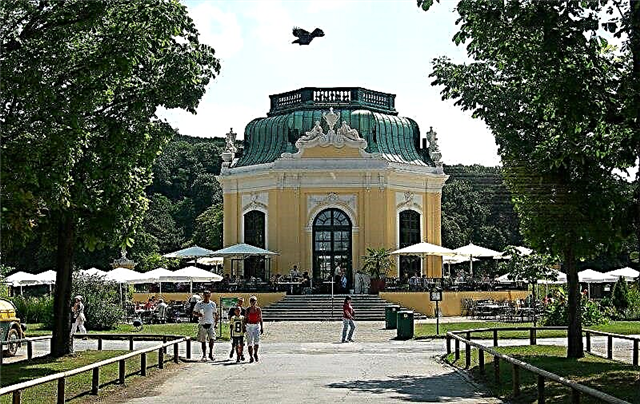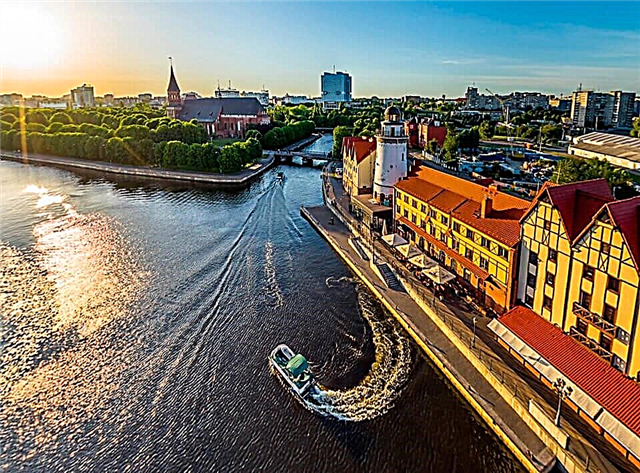The Czech Republic is one of the small states of central Europe, the territorial area of which reaches 80 square meters. km. The capital of the state is Prague, it is also recognized as the largest city. Administratively, the Czech Republic, or the Czech Republic, is divided into 14 regions. Their landscapes are simply amazing - wide valleys are cut by rivers, mountain ranges rise above forests, numerous lakes are attractive for their purity and useful composition of water.
Content:
Attractions of the Czech Republic
Short description
The wealth of Czech nature has always been attractive to different nationalities. For many centuries, the territory of the Czech Republic has been inhabited by the Celts. Over time, they were replaced by Germanic and Slavic tribes, and in the 6th century the Slavs were already the predominant nationality. Naturally, a struggle for domination was fought between the peoples, and it ended in the 10th century with the formation of the Czech state, taken over by the Přemyslid dynasty. Such an event was useful for the new country by the introduction of Christianity and the strengthening of relations with neighboring countries - Poland, Slovakia, Austria, Germany.

St. Vitus Cathedral in Prague
In the XIV century, the state became the Bohemian Kingdom, which included the Upper and Lower Lusatia, the lands of Moravia and the Principality of Silesia. After some time, the kingdom was shaken by a religious and social conflict, the instigator of which was Jan Hus, a fighter for new church reforms. However, the church did not support his undertakings and recognized him as a heretic, apostate from the established canons. And, as you know, it was customary to burn such people at the stake. With the death of Hus, most of the Czech population turned away from the Catholic Church, and a wave of disagreement swept through the country.
Over time, the situation only worsened. With the coming to power of the Habsburg dynasty (XVI century), all conflicts intensified even more and led to the destabilization of the situation in the country. With the beginning of the 19th century, a new period began for the Czech Republic - cultural and industrial development, which was facilitated by the weakening of the onslaught from the Austrian authorities. After the First World War, the Czech Republic reincarnated into Czechoslovakia (two nationalities, the Czechs and Slovaks, worked on its restoration in the post-war years). But after 20 years of independent prosperous existence, Czechoslovakia is occupied by fascist Germany, and again the country is going through hard times - its territory is engulfed in World War II.

Charles Bridge in Prague
At the end of the war, the communists were in power, and the previously independent Czechoslovakia has now become a socialist republic. In 1989, its citizens, unwilling to accept restrictions on freedoms and opposing union opposition, staged a velvet revolution. After 4 years, the socialist republic splits into two independent states - the Czech Republic and Slovakia. Further, the Czech Republic becomes a member of NATO (1998) and joins the European Union (2004).
Czech Republic for tourists - nature lovers
Connoisseurs of the beauty of nature in the Czech Republic will find many protected areas. For example, in Bohemia, i.e. In Western Bohemia there is the Šumava Nature Park, famous for the Bubin Forest. And this is really a real broadleaf forest, the plantings of which have never been cut down. Those who like to explore the underworld are welcome to visit the Koněpruské Caves, located on the territory of the Český kras nature reserve and being its main attraction. You can visit the karst caves in any season of the year. The western part of the Czech Republic is also rich in extinct volcanoes, whose craters proudly look up.

Konepruska caves, stalactite formation "Koneprusskaya rose"
Lovers of extreme sports are greeted by the caves of Moravia. Only in them you can get into an ordinary boat and cross the underground river and lake, see unusual stalactites frozen in bizarre shapes, and find yourself at the famous Macocha abyss. What else Czech Republic is remarkable for vacationers is its healing springs - thermal and mineral. The unique composition of their waters allows you to get rid of many serious ailments.
Wonders of architecture
Prague Castle is a gorgeous piece of architecture, majestically towering on the banks of the Vltava River. In combination with a stone fortress wall, it is a separate area with many palace buildings and church buildings, bridges, fountains, gardens. The most attractive buildings are the Powder Tower, St. Vitus Cathedral and Golden Lane. This area is memorable for the history of the Czech Republic because at the end of the 9th century the residence of the kings was located here, and with the formation of the Czechoslovak Republic, the Prague Castle received its president. Would you like to know if the president is in his office? Look up: if the state flag flies over the building, it means that the most important representative of the authorities on the spot.

Karlštejn Castle
Walking through the Czech Republic, you should definitely visit the Charles Bridge, which has been preserved since the Middle Ages. It is a link in a chain of 18 structures connecting the banks of the Vltava. Until 1342, its place was occupied by the Judith Bridge, a stone structure demolished by a flood. For this reason, Charles IV, the king of Bohemia, laid the first stone of the future bridge, which has survived to this day. Wanting to get a really strong structure, the king convinced the architect to use only the best materials for construction purposes. Following the order of the sovereign, the architect diluted the lime not with water, but with milk and raw eggs. As you can see, such a strange "recipe" turned out to be successful - the bridge still stands today.
Loreta Monastery opens its doors to all people who are interested in religion. Built in the Baroque style, inside the building conveys a copy of the hut of the Holy Virgin Mary. The stucco figures and bas-reliefs that appeared in the monastery after 1664 show the descendants of biblical scenes from the life of a simple, modest girl who received the good news of the Immaculate Conception in her womb. In the premises of the Loreta Monastery, you can admire a unique treasury that has collected valuable art products and ancient church utensils that have survived from the 16th century.

Lednice castle
The old quarter of Hradcany invites you to see the best museums in Prague. Its cultural and historical center is considered to be Hradčanskaya Square with a medieval layout that conveys the architecture of the Old Town. In 1726, a plague pillar appeared in the center of the square, decorated with a statue of the Virgin Mary and a sculptural group of figures of the patrons of the Czech Republic.
The Jewish City is another attractive historical area surrounded by the buildings of the Old City. It got this name for a reason - in the 12th century Jews appeared here, although historical chronicles claim that the first Jewish settlements were located near Vysehrad and on the Mala Storona of the Czech Republic as early as the 10th century. In the period from the 12th to the 16th century, the Jews founded the ghetto - a kind of state with its own governing bodies, independent of the Czech population. Of course, the indigenous inhabitants and rulers of the Czech Republic did not like such a neighborhood, and the Prague Jewish ghetto was repeatedly subjected to pogroms and was on the verge of eviction. Still, the Jews were destined to settle down on Czech soil - in 1848 they received both political and civil rights.

Medieval castle of Cervena Lgota
Karlovy Vary - wellness center in the Vltava valley
The famous resort owes its name to Charles IV, who started the foundation of the city in 1350. According to legend, the healing properties of natural springs were discovered by the emperor himself, who hunted deer in the forests of North Bohemia.Fleeing from pursuit, the animal fell into a pit of water and boiled - it was hot. From another belief among the Czechs, one can learn that Charles IV, in pursuit of a deer, injured his leg on the thicket, then mounted his horse, but he pulled and threw his master into the spring. After a while, the emperor noticed that the pain in his leg had disappeared. Whether it is worth believing these legends is up to you. But know that in Karlovy Vary you will find truly healing waters and a huge outdoor pool filled with mineral water. Isn't there a reason to improve your health? And if you want to combine water procedures with entertainment, then go to the Aqua Park located in the town of Klášterec nad Ohře.
When is the best time to go to the Czech Republic?
Going on vacation to the Czech Republic, it is advisable to foresee its direction in advance. So, if the vacation plan includes only acquaintance with the sights, then the country will be of interest to you from March to November (in the autumn-winter period, ancient castles are usually closed). If your vacation falls during the cold season, and you are not averse to skiing, then welcome - the mountains are waiting for you.

Powder Tower in Prague
Travel agents advise to arrange a trip to the Czech Republic from May to September. But if you want to visit Prague specifically, the best periods to get to know it are July-August and the Christmas season.
What to bring as a keepsake? Traditional Czech souvenirs are products made of Bohemian porcelain, crystal and leather. A sweet tooth will be delighted with Oplatky waffles, children - with Koh-I-Noor pencils, connoisseurs of the true taste of beer - a high-quality foamy drink from a Czech brewery.











